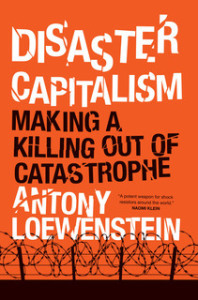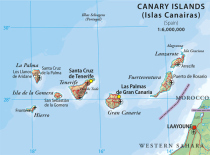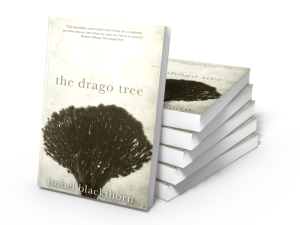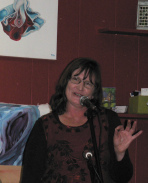Isobel Blackthorn's Blog, page 39
September 29, 2015
The relentless march of Empire
So the sugar cane roots that decimated the land of Central and South America, were taken there by Christopher Columbus on his second voyage from a source on the Canary Islands. Open Veins of Latin America by Eduardo Galeano.
That source was in large part Tenerife, where native forests had been clear felled to make way for sugar plantations.
It seems timely to remember what Empire did to hundreds of millions of people, in Africa, and in the Americas, and the world over. How it was the short-sightedness and avarice of the Spanish and Portuguese, and the calculated and shrewd opportunism of the Dutch and the British, that created a situation of unimaginable cruelty in the name of gain.
Lanzarote, the setting for The Drago Tree, was squarely in the path of this massive expansion of Empire. The island effectively linked the African slave trade to the South American silver and gold and cash crop exports.
Something about the exodus today of millions of people from war ravaged lands makes me thing of our recent human history (of, say, the last 600 years). Of the arrogant way the major powers choose to treat other nations and their peoples as if the mantle of Empire were still wrapped around their necks.
The Drago Tree is out now at Odyssey Books and through all good booksellers
Filed under: Uncategorized Tagged: empire, fiction, Isobel Blackthorn, Lanzarote, literary fiction, Odyssey Books, refugees, The Drago Tree








September 28, 2015
The Drago Tree is released!
I wrote the first sentence in 2009. I began to develop the ideas in late 2012. The story tumbled from me in the first months on 2013. Once I had a first draft, I re-structured, crafted, revised and polished until I had a final draft worthy of publication. In January 2015, Odyssey Books made the offer. And now, here it is, The Drago Tree!
Big thanks to Michelle Lovi of Odyssey Books, and to all who have supported me along the way. Feels like giving birth without the pain. All that remains is for readers to be tempted. And to find between the covers the riches I found as I wrote. Riches gifted me by an island of dramatic and unique beauty: Lanzarote.
Find out more here:
http://isobelblackthorn.com/the-drago-tree/
Buy here:
From today The Drago Tree will also be available through all good booksellers.
Filed under: Uncategorized Tagged: Drago Tree, Goodreads, Isobel Blackthorn, Lanzarote, literary fiction, Michelle Lovi, Odyssey Books, The Drago Tree








The Drago Tree is released
I wrote the first sentence in 2009. I began to develop the ideas in late 2012. The story tumbled from me in the first months on 2013. Once I had a first draft, I re-structured, crafted, revised and polished until I had a final draft worthy of publication. In January 2015, Odyssey Books made the offer. And now, here it is, The Drago Tree!
Big thanks to Michelle Lovi of Odyssey Books, and to all who have supported me along the way. Feels like giving birth without the pain. All that remains is for readers to be tempted. And to find between the covers the riches I found as I wrote. Riches gifted me by an island of dramatic and unique beauty: Lanzarote.
Find out more here:
http://isobelblackthorn.com/the-drago-tree/
Buy here:
From today The Drago Tree will also be available through all good booksellers.
Filed under: Uncategorized Tagged: Drago Tree, Goodreads, Isobel Blackthorn, Lanzarote, literary fiction, Michelle Lovi, Odyssey Books, The Drago Tree








September 21, 2015
In conversation on The Mix
Last Friday I had the privilege of talking about The Drago Tree on Lanzarote’s (Canary Islands) cultural programme, The Mix, with Jerry Lefever and his team.
Here’s the MP3. I’m on about halfway through. http://www.lanzarotemix.com/programmes/TheMix-2015-09-18.mp3
I’m delighted too, that they want me back on the show next month.
You can pre-order The Drago Tree here – Odyssey Books Due for release on 29 September and available in paperback and Ebook through all good booksellers.
Filed under: Uncategorized Tagged: Book launch, Isobel Blackthorn, Lanzarote, Odyssey Books, The Drago Tree, The Mix








September 17, 2015
The Drago Tree book launch @ Open Studio Bar, Melbourne
I’m delighted to launch my novel, The Drago Tree, at Open Studio, 204 High Street, Northcote, Melbourne, in a music and words show, accompanied by the enchanting music of Melbourne folk duo Tidal Moon. Come and be taken on a storybook journey to the exotic island of Lanzarote, with its dramatic landscapes and rich Spanish colonial history, and listen to Barbara Jeffrey and Jose Garcia of Tidal Moon perform some traditional music from the island on voice, flute, harp and guitar. Have a listen here And check out their website here.
Entry $10
Facebook event https://www.facebook.com/events/876100212481815/
Find out more about The Drago Tree
Pre-order a copy at Odyssey Books Release date 29 Sept.
Filed under: Uncategorized Tagged: Book launch, Isobel Blackthorn, Odyssey Books, Open Studio, The Drago Tree








September 14, 2015
Lanzarote: the fulcrum of an empire
The history of the Spanish conquest of the Americas upon the famous voyage of Christopher Columbus in 1492, pivots on an earlier conquest, that of Lanzarote and the Canary Islands.
Sailing is largely dependent on ocean currents. The Canary current sweeps down from Spain and Portugal along the West African coast, until it reaches the Equatorial current and shoots off into the Atlantic all the way to South America. Lanzarote is the first island in that current’s path.
Lanzarote had long been favoured by marauding Spanish adventurers covetous of the profits procured from dyes and slaves, when, in 1402, Norman knight and ambitious conqueror, Juan Bethencourt left La Rochelle with Gadifer de Salle and a retinue of men-at-arms. Bethencourt and Gadifer were determined to take possession of the “Fortunate Islands” on behalf of any Kingdom willing to strike a good deal. Following in the tradition of Church-sanctioned conquest, they took with them two priests, Pierre Bontier and Jen Le Verrier, who documented the conquest in a journal that would later become, The Canarian.
And in The Canarian the priests depict Lanzarote as wooded with brushwood, olives and higuerilla. There were natural springs in the foothills of the mountains. There were plains and broad valleys of tillable land. And plenty of rocks to build shelter. And a small and amenable indigenous tribe, (later known as los Conejeros, or Guanches).
After ‘subduing’ with empty promises the tribal leader, King Guadarfia, Bethencourt sailed back to Cadiz to strike a deal with Henry III of Castile that would make him conqueror and owner of all the islands.
Bethencourt was a greedy opportunist who knew the islands would bring ample wealth. He’d been keen to acquire the blue dye of the orchilla that clung assiduously to the malpais, and the sanguine sap of the drago trees, for use in his mills back in France.
After much betrayal, treachery and a series of attacks and counter attacks worthy of a Johnny Depp movie, King Guadarfia was a hero defeated. When Bethencourt returned with provisions, men and arms and of course his permission by King Henry III to conquer all the Fortunate Islands in the name of Castile, Guardafia and his people were worn out and demoralised.
Bethencourt returned to a hero’s welcome. According to the priests the natives surrendered and were duly baptised. At this point the priests claimed that all present had rejoiced, the heathens brought to salvation at last and a legitimate society born on this beleaguered land.
Of course the priests were biased. Guadarfia had no choice but convert or die.
The stage was set for a later conquest, that of the Americas. Lanzarote was the trading post. Ships laden with gold and silver and other treasures would put in to harbour en route to Spain, and so began a new wave of piracy.
We’d know a whole lot more about Lanzarote had the island’s official records not been destroyed in 1586, when renegade Jan Janz, Dutch privateer taught by the infamous Red Beards, turned Algerian pirate, Morato Arráez, went on a bloody carnal rampage.
Based on extensive research for The Drago Tree, released 29 September by Odyssey Books. Available at all good bookstores.
Filed under: Uncategorized Tagged: Bethencourt, Canary Islands, empire, Guadarfia, Guanches, Henry III of Castile, Isobel Blackthorn, Lanzarote, literary fiction, los conejeros, Odyssey Books, Pirates, Red Beards, Rubicon, slavery, Teguise, The Drago Tree








September 13, 2015
Open Vein’s still bleed

To my mind no book could be more timely or more apt. For what occurs now in Syria, in the Middle East, and the ensuing exodus of a traumatised people, is merely a repetition, possibly the culmination, of what went on in the 70s in South America, not only upon the pretext of, ‘Kissinger would not tolerate another Cuba in America’s own backyard,’ but because back then, behind the scenes, the neoliberal model of governance was poised to be implemented, and who better to do that than Pinochet, who rolled in his tanks on the 11th of September 1973.
Now neoliberalism has grown into the Beast it was always destined to become, and the ugly mess it creates is evident in ‘its own other,’ Daesh.
(I coin the phrase ‘a thing is its own other,’ to point the finger back to the source, the one doing all the complaining and accusing, being the exemplar of those very qualities. It’s also to be found in the verbal abuser’s handbook, as any victim of domestic violence will attest)
Reading Open Veins on the back of The Men who Stare at Goats by Jon Ronson seems fortuitous, as the latter portrays the sorts of crazy sinister goings on behind the scenes of the military and of course of our beloved CIA, which leaves the reader thinking they wouldn’t put anything past that lot.

Open Veins, depicts the consequences of such shenanigans.
We are currently witnessing a human tragedy on a scale not seen since WWII, as the media perpetually reminds us. And this tragedy invokes in many of us a sort of paralysis. Our response is both humanitarian, whether born out in protest, in donation, in actual physical help, and at the same time, befuddlement that such events could be occurring.
And of course many of us are horrified by Daesh. We sense that Daesh is to blame and must be stopped. We have a sense that we should never have invaded Iraq. We are troubled by all the troubles that won’t go away, in Palestine, in Afghanistan, in Lebanon, in the Kurdish lands.
Life likes irony, I’d say it was born to it, and there is no greater irony than the current influx of refugees into Europe, as many tens of thousands of innocents seek sanctuary in the very nations complicit in the downfall of the Middle East.
Much the same took place in South America, as vast numbers of asylum seekers sought sanctuary in Spain, its old Colonial oppressor.
The difference between then and now is the methods of the ‘conspirators’ have changed. In the 70s in South America, military dictators were installed in nation upon nation, with the covert assistance of the American military and the CIA.
Whereas now, military dictators are being toppled in favour of, ‘the completely failed state.’ A much better situation as it allows for far more $$ to be made and one doesn’t have to deal with a belligerent tinpot junta, a little despot with his own ideas.
Better to have no ideas. Better to have absolute mayhem and quite a lot of carnage. Blow the cities and the towns to smithereens and then we’ll have plenty to rebuild. Yahoo! That’ll keep us busy for decades.
If I were a European citizen, I’d be pissed off with America for cultivating the conditions which have led to the current social cataclysm as Syria implodes. And of course America is not alone on the geopolitical stage. Russia, Saudi Arabia, Israel, France, Britain, Germany et al, all have a vested interest in the catastrophe that spans from Libya through to Afghanistan.
Here’s one illustration:
http://www.globalresearch.ca/germany-participates-in-war-preparations-against-syria/32138
Really, what we are witnessing isn’t a pot pourri of national interests playing geopolitical chess, but a single, unified interest, and that interest is disaster capital. While nations posture and threaten and invade, vast corporations are adding the dollars to their tills. Which is why, after I have finished reading Open Veins, I shall be turning to, Disaster Capitalism: Making a Killing out of Catastrophe, by Antony Loewenstein.

So now, as I contemplate the current exodus from war-ravaged lands, and as I delve into the recent past of the 70s and trace the roots of that wave of Empiric atrocity, I do so knowing that the War on Terror and the Cold War before it, are veils, excuses. The root causes of both lie in the deep plans of neoliberalism and the ruthless reckless manner in which those plans are imposed on humanity.
Filed under: Uncategorized Tagged: American empire, antony loewenstein, asylum, asylum seekers, boat people, dystopia, Eduardo Galeano, empire, globalisation, Isobel Blackthorn, nature of humanity, neoliberalism, Open Veins of Latin America, profits of doom, refugees, The Men Who Stare at Goats, war








September 11, 2015
A premise for horror

Really, it isn’t a pyramid. It just is.
Domestic violence exists when a person is scared (apprehensive) of their partner, of what they might do or say next. Abuse = a misuse or corruption of power or privilege. Doesn’t have to be violent but it always violates.
And of course we all nod and say yes it sucks, but how many of us can spot a perp? How charming, how seductive, how manipulative they are. They may well have their family and friends and neighbours convinced of their perfection.
I know heaps of people who honestly believe that person X is a, ‘really nice guy.’ When I know for a fact that X is a bloody nightmare. I’m not immune either. I may think Y is a really nice guy, until someone whispers in my ear that they are not.
And if you go to a friend or a family member or the police and say, ‘person Z is gonna kill me,’ then you should expect to be believed and action taken.
We live in a world that is dominated by a perversion of the male archetype. Following Jung’s four archetypes of manliness, The King becomes The Tyrant, The Magician becomes The Manipulator, The Warrior becomes a Sadistic Bully, and the Lover becomes the Rapist. (This is a fuller explanation)
Women are not immune. They, too, can and do adopt the perverse male archetype mantle, especially when they walk into positions of power.
For humanity lacks an awareness of power, let alone mastery of it. Therefore we are seduced by power and as it enters us and we welcome in that delicious Uberman sense of it, our awareness is eclipsed and we are from then on addicts.
It all needs to change. So, what’s to be done? Educate. Educate. Educate. Teach Jung. Start in Kindergarten.
We already know how to change things. But inertia and the pull of the status quo hold sway.
Above all, our desire and our capacity for denial hold sway.
Which makes for a damn good premise, for a horror novel.
Filed under: Uncategorized Tagged: domestic violence, horror, Isobel Blackthorn, literary fiction








September 9, 2015
Sannah and the Pilgrim by Sue Parritt
I’ve just finished reading Sannah and the Pilgrim, my first journey into the sub-genre of climate fiction. I’m not a reader of the fantasy genre, then again, I wouldn’t call Sue Parritt’s book fantasy. Instead Parritt paints a stark post-climate change dystopia that contains as much realism and social commentary relevant to us today, as it does details of an imaginary future world. The message is clear, challenge the status quo or this is where we are heading. And for that alone, I commend the author.
The story is simple and straightforward. Sannah discovers a strange man on her doorstep who calls himself a pilgrim. Together, and with the help of co-conspirators, they seek the escape of political prisoners while there is still a chance to do it.
In Sannah and the Pilgrim there are no tangents into the deep introspections of tortured hearts and minds. The narrative voice is matter-of-fact, an apt style that mirrors the, for the most part, taken-for-granted acceptance of Australia’s apartheid social structure hundreds of years from now.
The story is compelling and satisfying, the landscape bleak, yet in the end Parritt allows her readers to take away a little hope. I would recommend this book to younger readers looking for a good climate fiction read. 4 Stars
Filed under: Uncategorized Tagged: Book review, climate change, climate fiction, dsytopia, Odyssey Books, Sannah and the Pilgrim, Sue Parritt








August 28, 2015
Deliria – book review
Initially, with paperback in hand, I hadn’t anticipated that I would review Deliria by Chris Heffernan. Two pages in, I was excited by the fresh, lively voice, and by the way Heffernan, through the eyes of his protagonist, depicts Adelaide with acerbic wit.
The plot is very simple. William is an intelligent twenty-two year old university student who falls hopelessly for the stunningly attractive eighteen-year-old music student, Deliria.
Deliria is trouble from the first. She tantalises William, lures him into her world of petty theft. She’s a femme fatale. And he’s besotted.
What ensues is a series of little adventures, escalating in risk.
Deliria is set against an urbane backdrop of twelfth-century French poetry, classical music and Thailand. Adelaide portrayed as the antithesis: crass, and distinctly uneventful. William’s thirst for stimulation is met in Deliria, who represents the sort of adventuress commensurate with the uncouth cultural and social fabric of Adelaide that William sees all around him. With a twisted morality and a series of perverse justifications, Deliria is perhaps an inevitable product of an age of shallow, conspicuous consumption, and its nemesis.
In William, Heffernan portrays the absurdities and intensities of an young man caught up in ennui. Acutely observed, William’s narrative is a perfect balance of introspection and observation, with enough self-awareness to endear the reader.
To my mind, Deliria sits comfortably alongside Phillip Roth’s Indignation. It’s a loose yet apt comparison, both books tackling the consequences of an educated young man’s dogged attachment to a single idea, or feeling. Although each author tackles his subject in a markedly different manner.
I found Deliria a thoroughly entertaining read. 5 Stars
Deliria can be found at Odyssey Books and at all good bookstores.
Filed under: Uncategorized Tagged: book reviews, Chris Heffernan, Deliria, fiction, Goodreads, literary fiction, Odyssey Books





















